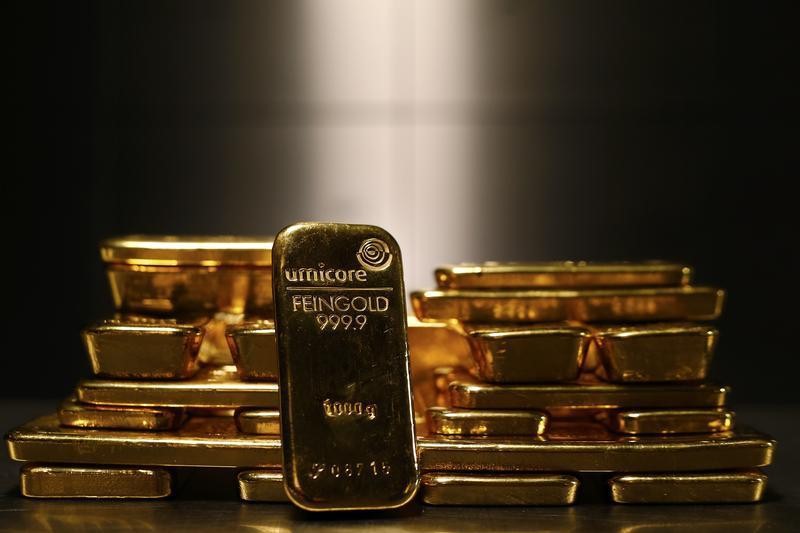By Barani Krishnan
Investing.com - It steadfastly clung to $1,800 for the past four weeks but almost lost that perch as trading began for 2022, in what appeared to be a mixed sign for gold as the U.S. Federal Reserve prepares to execute its first rate hike since the onset of the coronavirus pandemic.
A spike in benchmark U.S. Treasury yields to a six-week high above 1.6% put paid to the bullish adventure gold has been on since early December.
"When real yields rise, the opportunity cost of holding non-yielding gold also rises, dimming its appeal,” Joel Frank said in a post on FX Street.
“The surge in yields appears to have its roots in a surge in confidence about the long-term outlook for the U.S. economic recovery, despite the ongoing risks presented by (the) Omicron” variant of Covid, added Frank.
U.S. gold futures’ most active contract, February, fell by $28.50, or 1.6% at Monday’s settlement — its most in a day since Nov. 22. While the contract did fall beneath $1,800 in intraday trade -- hitting a session low of $1,798.35 -- it held a dime above that key support level at the close, settling at $1,800.10.
That led to a mixed messaging: That the crowd believing in gold as an inflation hedge could still push it higher in the coming days and weeks, even as the constituency of short sellers looked set to knock it down further if the dollar and the benchmark U.S. 10-year Treasury note joined forces in a rally fatal to gold.
Gold has traditionally been touted as a hedge against inflation, although that argument was weakened last year as the yellow metal’s prices steadily fell in the face of ramping price pressures in an U.S. economy rebounding aggressively from the coronavirus pandemic. Often, gold fell at the expense of the dollar and U.S. Treasuries, which rallied on expectations of rate hikes by the Federal Reserve to tamp down inflation.
“The Fed is unlikely to have as many rate hikes as it thinks in the coming year and if employment slows again for any reason, hedging in gold could again become a theme,” said Phillip Streible, precious metals strategist for Blueline Futures in Chicago.
The Fed is due to release on Wednesday minutes of its December meeting where it laid out an expedited timetable for ending its pandemic-era stimulus. The central bank has said it could have as many as three rate hikes in 2022 but that will depend on keeping inflation at 2% a year and unemployment ideally at around the 4% level that it defines as “maximum employment”.
The U.S. jobless rate soared to a record high of 14.8% in April 2020 after the Covid-19 outbreak, but fell back to 4.2% last month. But the U.S. Consumer Price Index and the Fed’s preferred inflation gauge — the core Personal Consumption Expenditures Index — both grew at their fastest in 40 years in November.
News of rate hikes are almost always bad for gold, which somewhat reflected this last year as it closed 2021 down 3.6% for its first annual dip in three years and the sharpest slump since 2015.
But if the inflation theme remains strong through 2022, then gold could rebound, and even retrace 2020’s record highs above $2,100 — which, incidentally, came on the back of inflation concerns. That’s what bulls in the precious metals space are counting on.
